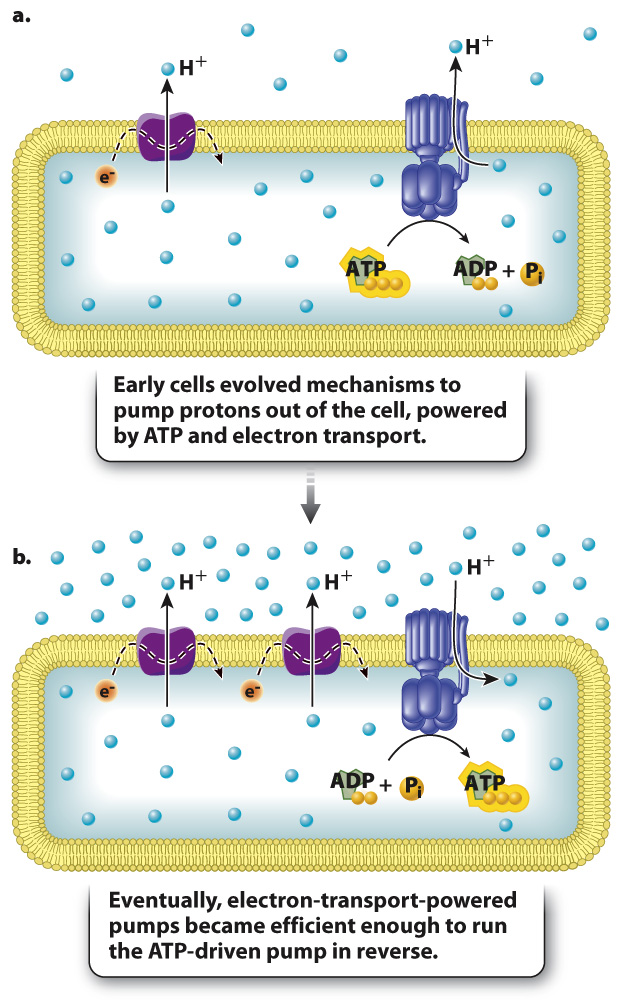Case 1: How did early cells meet their energy requirements?
CASE 1 THE FIRST CELL: LIFE’S ORIGINS
The four stages of cellular respiration lead to the full oxidation of glucose, resulting in the release of a large amount of energy stored in its chemical bonds. The first stage, glycolysis, results in only the partial oxidation of glucose, so just some of the energy held in its chemical bonds is released. Nearly all organisms are capable of partially breaking down glucose, suggesting that glycolysis evolved very early in the history of life.
Life first evolved about 4 billion years ago in the absence of atmospheric oxygen. The earliest organisms probably used one of the fermentation pathways to generate the ATP necessary to power cellular processes because fermentation does not require atmospheric oxygen. Fermentation occurs in the cytoplasm and does not require proteins embedded in specialized membranes.
As we have seen, cellular respiration involves an electron transport chain, composed of proteins embedded in a membrane and capable of transferring electrons from one protein to the next and pumping protons. The resulting proton gradient powers the synthesis of ATP. Like fermentation, cellular respiration can occur in the absence of oxygen, but in that case molecules other than oxygen, such as sulfate and nitrate, are the final electron acceptor (Chapter 26). This form of respiration is known as anaerobic respiration and occurs in some present-
How might such a system have evolved? An intriguing possibility is that early prokaryotes evolved pumps to drive protons out of the cell in response to an increasingly acidic environment (Fig. 7.15). Some pumps might have used the energy of ATP to pump protons, while others used electron transport proteins to pump protons (Fig. 7.15a). At some point, proton pumps powered by electron transport might have generated a large enough electrochemical gradient that the protons could pass back through the ATP-

Organisms capable of producing oxygen, the cyanobacteria, did not evolve until about 2.5 billion years ago, maybe earlier. The evolution of this new form of life introduced oxygen into Earth’s atmosphere. This dramatic change led to the evolution of new life-
The evolution of cellular respiration illustrates that evolution often works in a stepwise fashion, building on what is already present. In this case, aerobic respiration picked up where anaerobic respiration left off, making it possible to harness more energy from organic molecules to power the work of the cell.
147